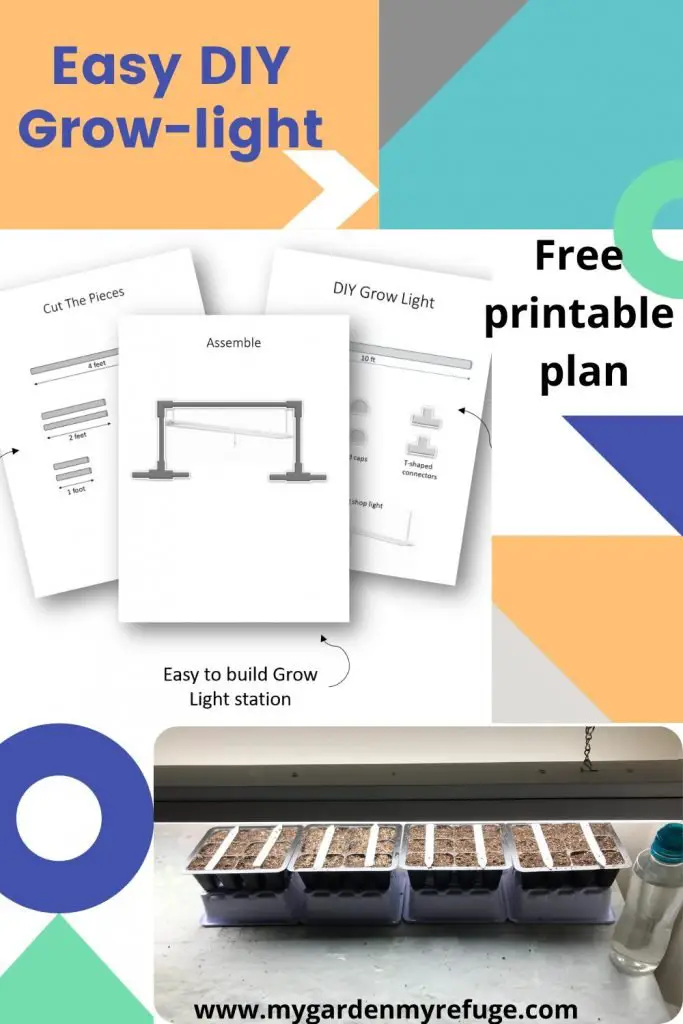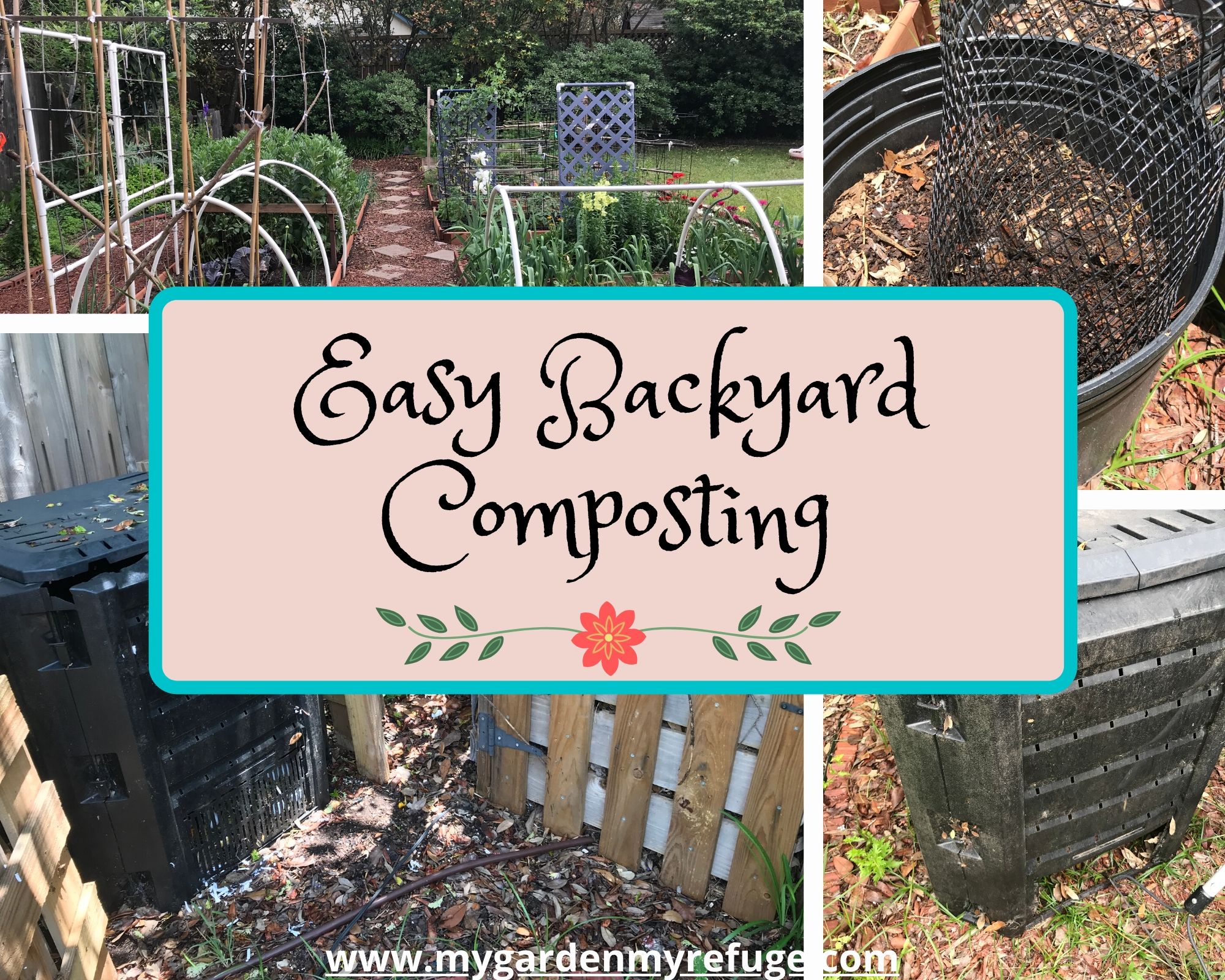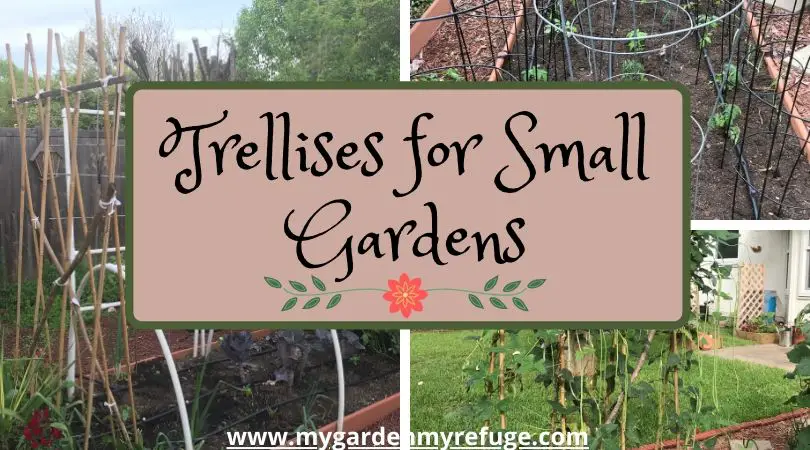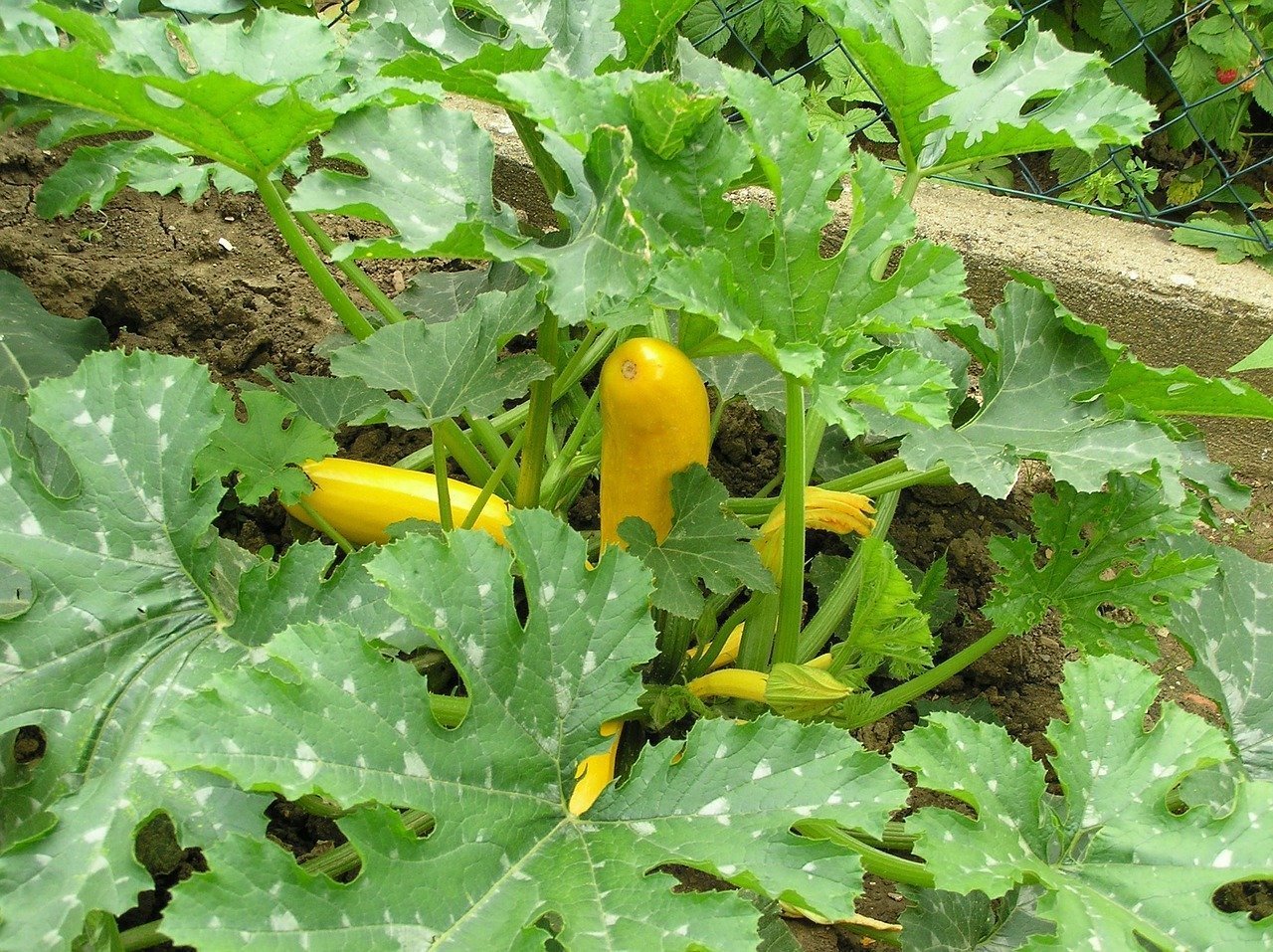Commercial grow lights can get quite expensive, and most of the time, new gardeners are not ready to pay for them. Here is an easy DIY seed starting grow-light station that you can set up in one afternoon.
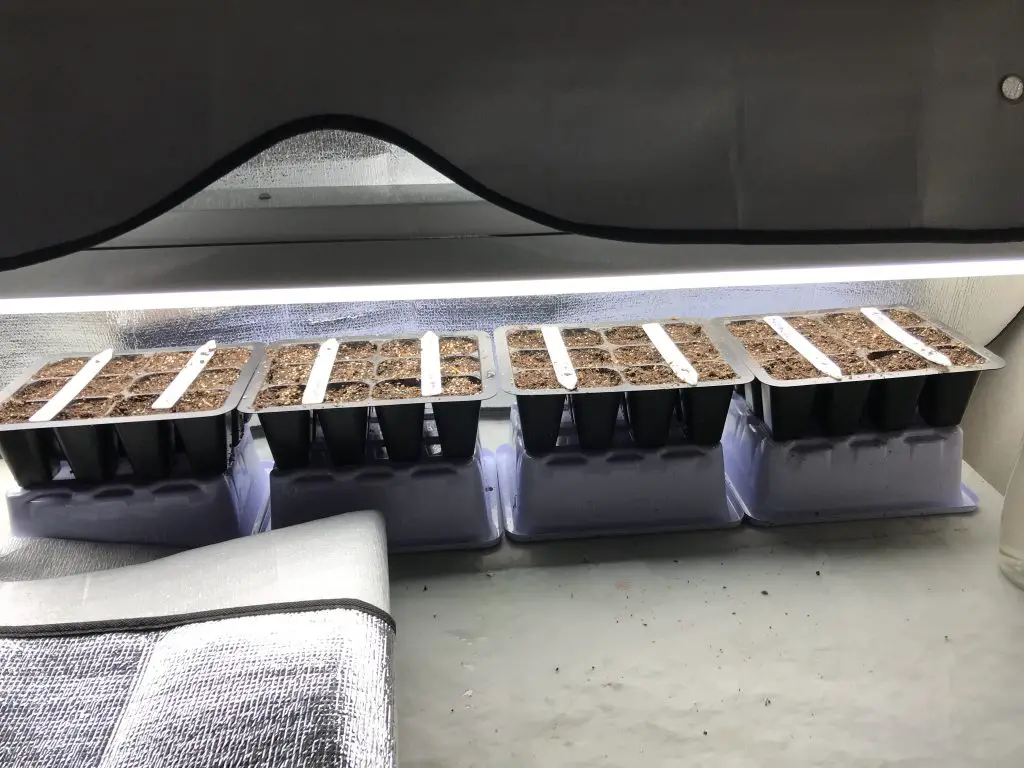
What do seeds need to germinate?
Proper seed germination requires the right balance of these four elements: water, oxygen, heat, and light.
Water:
Moisture is the most critical factor in triggering germination. A dry environment will keep the seeds dormant, and a wet environment will cause them to rot.
Oxygen:
Oxygen is the second factor for proper seed germination. Seeds are living things and need oxygen to process nutrients to grow. If oxygen is low, the seed won’t be able to feed itself and will eventually die. Two main factors could reduce oxygen around the seed: planting depth and high moisture level.
Plant the seed at the correct depth to allow oxygen accessibility. The rule of thumb is to plant twice its size. However, some seeds do not need to be covered, so check the packet for more information.
As mentioned above, high moisture levels also contribute to decreased oxygen available to the seed. Therefore, the seed starting soil should be moist and not wet. Make sure to allow it to slightly dry between watering.
Temperature:
Each seed needs the right temperature to germinate. Some require a period of cold, while others need warmth. The heat comes from the sun or any other source of light.
Light:
Light is the factor that provides heat and signals to the plant in the right direction to grow. Soil particles absorb certain wavelengths and block others, sending only the right ones to the seed to trigger germination.

Do all seeds need to be started indoors?
Some crops require a long time from germination to production. For this reason, gardeners start them indoors ahead to save time. Some typical crops worth starting are tomatoes, peppers, eggplants, basil, flowers, and brassicas.
Do all seeds need light to germinate?
The common belief is that seeds do not need light before they break dormancy. However, the truth is soil particles absorb specific lightwaves that contribute to seed germination. Also, some seeds require exposure to sunlight to germinate.
How to choose the right to grow light for seed starting?
Keep in mind that no artificial light can replace sunlight. However, grow lights are helpful to having strong seedlings. Shop lights are an economical way to set up a grow station. They come in different colors and strengths, but you need the one that best imitates daylight.
Shop lights come with two units of measurement: Kelvin measures the warmth of the light, and Lumens measures the brightness. For best performance, go for 5000-6000 kelvin and 3000 lumens.
Read more about lights here.

Materials you need to make the grow-station
Let’s make our basic seed starting station. For this, you need
- 10 feet long 3/4 or 1/2 inch PVC pipe
- Two L-connectors (fittings)
- Two T-connector (fittings)
- Two end caps (optional)
- A shop light with a hanging chain.
- Two screws, hooks, or chain clips
Make the cuts
Cut the PVC pipe into
- One four-feet long piece (holder).
- Two two-feet long parts (legs).
- Four six-inches long pieces.
Assemble the pieces
- Connect the long piece with the legs using the L-shaped fitters.
- Insert the end of the leg into the T-shaped connector.
- Insert the shorter piece into each side of the T-connector.
- Close the ends by inserting the end caps.
- To hang the shop light, screw the hooks on the pipe.
How to use the light?
- Once you have planted the seeds, place the trays as close as possible to the light.
- Keep the light on for at least 14 hours a day and turn it off for the night.
- As the seedlings emerge, move them further from the light every time they start touching it.
- When the seedlings get their true leaves, count at least two sets before potting them up.
- You may continue using the grow light for the transplants, but it is best to start exposing them to sunlight gradually.
